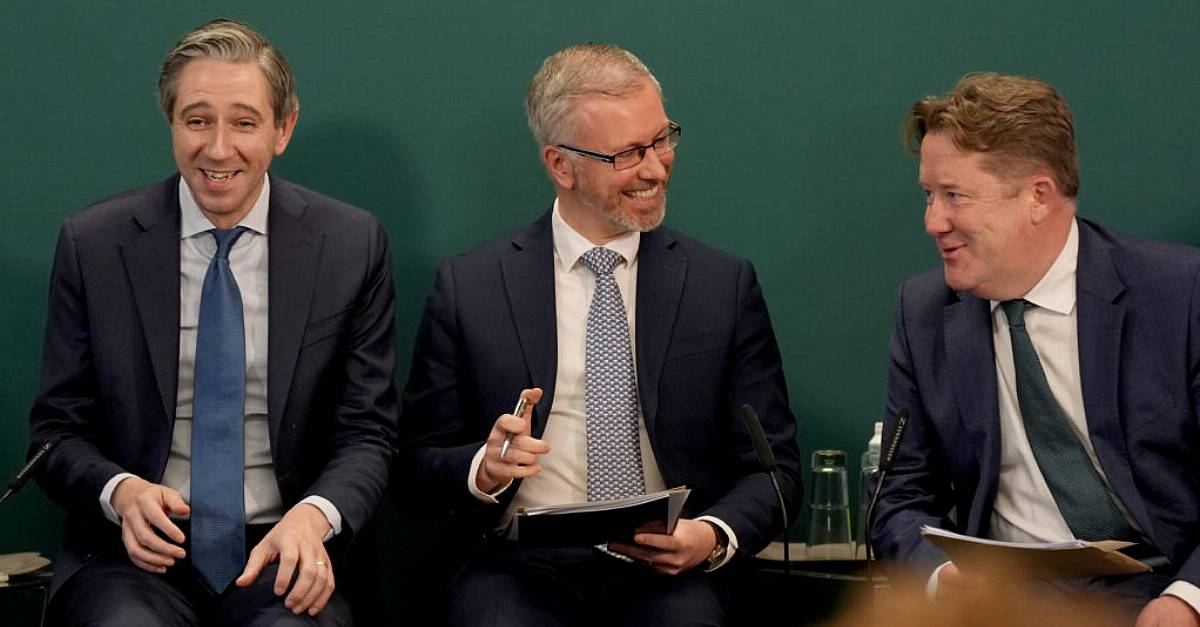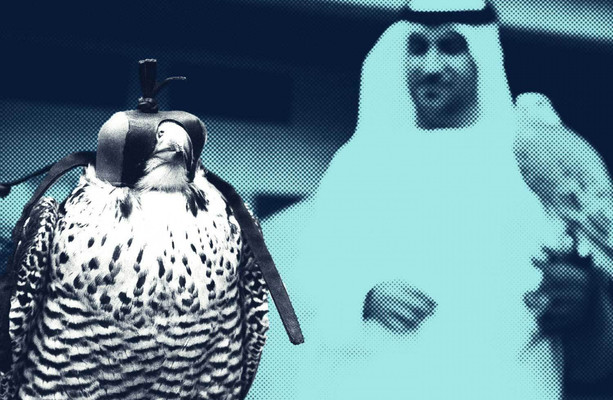- 359 Posts
- 515 Comments

 4·19 days ago
4·19 days agoThere was more drama? I didn’t even notice. They’re always doing drama.

 91·20 days ago
91·20 days agolemmy.world is a reddit clone, reddit-tier politics
lemmygrad.ml and hexbear.net extreme communist (hexbear.net consists mostly of trans people)
lemmy.ml is mostly communist but gets more sorts of people than the two above
lemmy.dbzer0.com is focused on piracy

 2·22 days ago
2·22 days agoI actually wasn’t but that’s a different story

 12·23 days ago
12·23 days agoIf they say “the goose doesn’t like his ball” that is misgandering.

 165·23 days ago
165·23 days agoI’ve had people flip out at me on Lemmy for ‘misgendering’ it’s so ridiculous.
Like we don’t know if it’s a man or woman. It’s the internet, yknow?

 3·27 days ago
3·27 days agoI love goblins and lizardmen
Fine 😔

 83·29 days ago
83·29 days agoand, conversely, posting things you have “verified”
“You’re wrong! I was able to prove it with a quick Google!”
Your knowledge coming from a ‘quick google’ isn’t the flex you think it is. Most things that can be proven with a quick google are false.
 4·1 month ago
4·1 month agoMy great grandmother was Cumann na mBan
Ha! Mine was too!
 11·1 month ago
11·1 month agoI’ve heard the Irish are rather decent bomb makers and have a history of repelling invading cunts.
This will serve you well as a chat-up line.
 13·1 month ago
13·1 month agoNothing makes me angrier than the right appropriating the symbols of anti-imperialist struggle.
These guys will wave signs of Patrick Pearse as a right-wing “Ireland for the Irish” nationalist statement. It’s a total dishonour to the memory of the Fenian movement, who didn’t promote anything like that. (Pearse was the son of an immigrant.)
The anti-immigrant movement is tied with the imperial core. It’s a fundamentally imperialist movement, not anti-imperialist.

 2·1 month ago
2·1 month agoI want to know how it works in real life for you.
What works for me in real life is know as little as possible, view all beliefs as clouds moving across the sky
 3·1 month ago
3·1 month agoJust east of the Hellfire Club on the slopes of Mount Pelier, opposite the entrance to Massey’s Wood is a private residence once known as the Stewart’s House. This area around The Hellfire Club is one of the most notorious haunted locations in Ireland. It is said that the Hellfire Club was cursed because it was built on the site of an ancient Stone Age burial cairn using rocks from the cairn in its construction.
This Stewarts House was part of the former Lord Massey’s estate and has its own ghoulish story. Hugh Massey squandered his wealth and the banks repossessed his vast ancestral home once called ‘Killakee House’ and it was subsequently demolished. Following the demolition the Stewarts House became known as ‘Killakee House’. In the 1960s and 1970s it was believed that this house was haunted. Many uncanny happenings, violent events and mysterious phenomena took place there. The house is linked to activities that took place in the Hellfire Club and was used by the Hellfire Club members on several occasions before and after their nocturnal activities on top of Mount Pelier.
Local legend tells how Richard “Burnchapel” Whaley, a local member of one of the richest families, and a regular member of the club revelled in the debauched rituals. They are said to have included burning black cats alive and the worshipping of cats in place of Satan himself.
The ghost of a woman screaming in anguish has also been reported in the area. It is believed that she was murdered by being trapped in a barrel, which was then set alight and rolled down the hill while the young aristocrats of the club laughed.
Additionally Killakee House and the nearby Hellfire Club was said to be haunted by the spirit of a young man, a dwarf, who was brutally murdered in the Eighteenth century, during a ritual at the Hellfire Club. Giving credence to the rumors in 1971 the body of a dwarf was found buried under the kitchen of Killakee House alongside a grotesque effigy of a horned and tailed demon.
There have been other noted visitors who stayed in the house. Countess Markievicz spent some time in the house in the years before the 1916 uprising. During the troubles in the 1920’s a gun battle between the IRA and Black and Tans took place there, killing five members of the newly-formed IRA.
After a period of disuse the derelict building was purchased by Margaret O’Brien and her husband, in 1968. They planned to renovate it and open it as a Tea Rooms and Arts Center. Little did they know that it was already inhabited by a ghostly creature. Workmen restoring the house were terrified by numerous sightings of a huge black cat, said to be about the size of a dog with gleaming red eyes. Additionally there were other disturbances including locked doors opening by themselves. Many of the workmen left without even collecting their wages and they refused to stay in the house. It fell to friends and family to finish the work.
At first Mrs. O Brien thought the whole thing was nonsense, until she saw the creature for herself. She said the animal was about the size of an Alsatian and that it squatted on the flagstones in the hallway. All the doors were locked before the apparition appeared and they remained locked after its disappearance.
One evening an artist known as Tom McAssey and two other men were painting the main hall and another room when the temperature dropped alarmingly. They were shocked to find the heavy 18th century door swinging open, revealing swirling mists, especially as they had locked it earlier that evening. McAssey was further unnerved by the sight of a shadowy figure on the doorstep who spoke in a menacing guttural voice warning them that the door must not be closed.
As they fled, the figure in the hall changed form . He described it as “A monstrous black cat with red-flecked amber eyes crouched there in the half-light “
Later McAssey painted a portrait of “The Black Cat of Killakee” which still is in the house today.
There were further sightings of the infamous Black Cat of Killakee in the area. Locals felt it was not the spirit of a cat, but rather a terrifying elemental spirit. Those who have encountered it report that it is capable of speech, and has a face that can only be described as disturbingly humanoid
Locals were not the only ones to see the apparitions of the cat or the dwarf boy. In the 1970s a series of séances and Oujjia board sessions were carried out in an attempt to lay the ghosts to rest. However the disturbances accelerated and worsened. Lights turned on and off independently, furniture was broken into pieces during the night and bells were heard ringing. The dwarf boy was seen walking with a bloodstained man.
In fact RTE made a short programme about the goings on in an attempt to catch the poltergeist at work but all was quiet on that day. The following day was a different story altogether: a sticky substance oozed throughout the house. The O’Brien’s new pottery was smashed and paintings were torn to shreds. In the following days different types of caps materialized on the floor and chairs: babies caps, sun caps, woolly hats and women’s hats. Some contained coins from France and Poland. In 1977 a priest exorcised the house and all haunting ceased, at least for the time being.
After the Arts center opened guests stayed there frequently. One night, a group of actors a little the worse for drink held a séance there, as they had heard rumors about the cat locally. The cat was soon back, as well as the ghosts of two nuns that would pop up unexpectedly from time to time, confronting guests in the gallery. A medium visited soon after, and claimed that the spirits were those of women who had assisted in satanic rituals done by the notorious Hellfire Club.
 1·1 month ago
1·1 month agoKevin Riehle, a lecturer at Brunel University in London who previously served in various counterintelligence roles in the United States, said the activity was consistent with Russian active measures.
“It’s normal for Russian services to target people in political life. They rarely get a senior person but usually someone who is a friend of a senior person, or a supporter who has the ear of someone in power. Rarely does a Russian intelligence officer get the luck of recruiting a political representative,” Riehle said.
“That’s a win for any intelligence officer. As far as Russian intelligence is concerned, anyone who is an elected representative is a senior official. That’s a big deal.”
Riehle suspects the Russians who secretly interacted with Cobalt let him know they knew certain things about him.
“If a Russian intelligence officer studied a target and discovered they have a predilection for one thing or another that might be embarrassing, then it provides an angle to work on. Whether it is sex- related or being in debt, it gives an angle. And the intelligence officer will use this in conversations, sometimes overtly, saying, ‘We know you do such and such,’ or sometimes it’s more subtle, they will mention something fleetingly. They tend to pride themselves on being subtle rather than putting a gun to someone’s head,” he said.
Russia’s spies are likely to have learnt from their errors following Prokopiev’s expulsion, and have adjusted their tradecraft and embarked on a new phase of political warfare against the West since the invasion of Ukraine. In recent years, they have become more inventive, sending spies posing as Ukrainian refugees fleeing the war to Ireland. They are also using criminal gangs, republican paramilitaries in left-wing fringe groups and far-right extremists as proxies. The threat is continuing to evolve.
Despite the ongoing investigations and recent diplomatic expulsions, Cobalt remains very much under the radar, with only a select few in the security services aware of his connections to Russian intelligence.
The Kremlin’s infiltration into the core of Irish politics has been uncovered for the first time, prompting concern among senior officials in intelligence and defence services. Many now contend that the government must urgently implement new espionage legislation and other proactive measures to safeguard Ireland’s national security.
For the time being, however, Cobalt remains in place.
KGB tactics still serve Moscow well today
Russia’s intelligence war against Europe is relentless, John Mooney writes. The recruitment of a person in the Irish political establishment as an agent of influence reveals what Moscow’s spies can and will do. It is also a reminder of Ireland’s vulnerability to espionage and covert influence operations.
“Russia has a long history of active measures — what we in the West would call covert action — designed to inflame and aggravate grievances in target populations,” said Calder Walton, a historian of intelligence and global security at Harvard University and author of Spies: The Epic Intelligence War Between East and West.
Given Ireland’s history of sectarianism and paramilitary violence, the country is fertile ground for Russian operations, he said. “The same was true for the wedge issue of Brexit in Britain. It’s important to remember that many of the Kremlin’s ‘useful idiots’ — a KGB term — in the West didn’t even know they were being manipulated. Others, however, were willing assets.”
Since the mass expulsion of Russian spies from the EU in 2022 after the invasion of Ukraine, Moscow has redoubled its efforts to recruit assets inside parliaments, police forces and militaries, civic organisations and universities.
This year spy rings have been uncovered in Britain, Germany, France and Bulgaria. Agents have even been found in the European parliament.
The Kremlin has not confined its malign activities to espionage: it is conducting sabotage and even murder. In February, Maksim Kuzminov, 28, a Russian air force pilot who defected to Ukraine, was shot dead in Spain, murdered by a unit whose members lived under deep cover.
The details of how Russian intelligence recruited someone in the Oireachtas, revealed by The Sunday Times today, echo the covert actions pioneered by the KGB in Soviet times.
Flattery and seduction, also known as honeypot traps, were used as inducements to entice Cobalt, the pseudonym we have given an Irish politician who has assisted Russian spies.
In other cases, laptops, social media accounts and the smartphones of other targets have been used by hackers to steal compromising information. Families are also targeted.
John Sipher, a former CIA officer, said Russia had a long history of conducting such operations. “The Russian security services would most definitely consider this person an asset, agent or source,” he said. “Politicians who take money or other inducements to make decisions that benefit the Kremlin can be considered agents of influence.”
He added: “Intelligence services seek people who can help them in some way, with some level of control — whether it’s ideological, financial or through blackmail.
“In the US, we usually look for sources that have access to information the US needs but cannot get any other way. Think of access to Kremlin decision-making or someone in Iran’s missile programme.
“Russians, on the other hand, recruit intelligence sources for spreading propaganda, disinformation or sabotage. They call these active measures, and they include not just collecting secrets but taking action: injecting chaos or false information into a country or company, supporting violent or fringe groups, and even assassination.”
Sipher continued: “It could be a politician who takes money to make decisions that benefit the Kremlin. It could be an editor that puts disinformation into their work, a person with a public persona that can make comments that help Russia, or a technician that puts something in a computer system.”
Russian agencies aim to disrupt, which in part explains why they went to such lengths to penetrate the Oireachtas.
Agent Cobalt has engaged in many activities that have undermined public trust in institutions, though for legal reasons we cannot say how.
To this day, Russia appears to be protecting him. Using an alleged honeypot to snare him was part of its toolkit.
Across the EU, the Russians are targeting politicians, civil servants and their families through cyberattacks, hacking smartphones, compromising communication. The families of Russian immigrants are urged to co-opt relatives. In Ireland, Russia forges links with paramilitaries, criminals and extremists.
Ireland, with its traditionally neutral stance, has long been considered a soft target compared with other EU nations because of official naivety — though that has changed as the government has wound down Russia’s diplomatic presence to a handful of people, including its ambassador, Yury Filatov.
The presence of Russian illegals, intelligence officers who operate under deep cover, is not known and hard to discover.
While countries such as the UK, Germany and France have frameworks in place to catch foreign agents, Ireland’s legal and security infrastructure is unequipped to handle such threats. Politicians cannot be watched unless there is evidence to show they have committed a crime. Even then, there would be a reluctance to apply for a surveillance warrant.
Since discovering Cobalt, Ireland has stepped up its co-operation with partner agencies to catch Russian agents and their handlers. It has become a battle that is likely to intensify after Ireland’s decisions to raise spending on defence and support Ukraine.
Both policies will draw President Putin’s ire as the Russian leader becomes even more determined to undermine the West.
 1·1 month ago
1·1 month agoHow a Russian operative snared an Irish politician
Classic Cold War tradecraft lured a sitting member of the Oireachtas to offer his services to a spy
John Mooney
Sunday October 06 2024, 12.01am BST, The Sunday Times
Despite his extensive counter-surveillance training, Sergey Prokopiev failed to notice the surveillance officers monitoring his activities at quarters. Officially, Prokopiev served as a counsellor at the Russian embassy on Orwell Road in Dublin, but this was a cover story.
Prokopiev was a spy: a high-ranking military intelligence officer sent to Ireland by Russia’s armed forces to operate under diplomatic cover. His mission was to recruit and handle agents, sources and assets from the worlds of politics, business and media, but also to engage in what Russians call active measures: the modern iteration of the political warfare tactics employed by the KGB during the Cold War.
At the time of his arrival in Ireland in March 2019, Prokopiev was focused on rebuilding Russia’s intelligence network on both sides of the border. He was particularly interested in establishing contacts with loyalist and republican paramilitary groups in Northern Ireland, which had sprung to life during the Brexit negotiations between the European Union and Britain.
Loyalists were threatening violence over the negotiations, which proposed creating an invisible border in the Irish Sea to prevent the return of a land border. The Kremlin was interested in exploiting these tensions as part of its covert efforts to destabilise relations between Ireland and Britain and the West.
Russian intelligence officers are experts at recruiting what they call “useful idiots”, people who act in their interests and can be easily exploited to make the right introductions or provide information. At the time, Ireland’s intelligence services and the military knew Prokopiev was holding meetings with lots of people. Among them was a member of the Oireachtas, whom we shall call Cobalt. When a meeting held outside Dublin was monitored, their suspicions were confirmed: Cobalt offered to do whatever he could to assist the spy, despite never having engaged with paramilitaries in his career.
This revelation triggered a top-secret investigation, uncovering one of the most significant national security issues in recent history. Now, for the first time, following years of investigations by The Sunday Times, the story of how Russia cultivated an agent of influence inside the Irish political establishment is being told.
Prokopiev arrived in Ireland a year after the state expelled another Russian diplomat in response to the attempted murder of Sergei Skripal and his adult daughter Yulia by two Russians in Salisbury in England. The attack had involved a form of novichok, a lethal nerve agent that originated in Russia. One Russian diplomat was forced to depart Ireland but four left, possibly to provide cover. Ever since that original meeting, Cobalt’s activities have been of deep interest to both J2, the military intelligence branch of the Defence Forces, and garda intelligence. Initially, he was thought to be just another useful idiot. However, this assessment came into question after garda special branch approached him with a formal warning that he was being targeted by Russian intelligence. He dismissed their concerns, prompting further investigations. By this stage, military intelligence were already aware of Cobalt’s willingness to assist Prokopiev with meeting loyalist paramilitaries.
The activities of Russia’s intelligence services are not regulated by legislation or codes of conduct but by the possible outcomes of their operations. Russian spies study their targets, looking for any personal vulnerabilities they can use to convince a person to co-operate. But their active measures have become more ingenious as western intelligence services disrupt them. Russian assets now include everyone and everything from organised crime gangs to civil servants.
The four main issues that make people psychologically vulnerable to recruitment by spies are money, ideology, coercion and ego. Cobalt’s finances were initially examined to try to establish whether he was receiving money, but these inquiries produced nothing suspicious. The security services later came to believe the Russians might have obtained kompromat (compromising information) on him, possibly during his travels abroad. According to flight data seen by The Sunday Times, Cobalt has travelled to countries, including outside the European Union, where Russian services operate without fear.
Andrei Soldatov, an authority on the activities of Russian spies, said organisations such as the GU, SVR and the federation’s FSB internal security service had become more aggressive in targeting politicians across the West using such techniques.
“This all sounds very familiar,” said Soldatov, who explained how Russia’s spy agencies used an assortment of tactics to obtain kompromat. “If the surveillance teams see something compromising, they will use it. For example, if anyone important travels to Moscow or another Russian city, their hotel room will be monitored. If they see anything, they will alert their sister intelligence services to say they have identified someone who could be targeted. Why do they do these types of things? Influencing opinion in Ireland is very important to Russia,” he said.
• Killings, coups and chaos: inside Putin’s secret spy war on Europe
The Kremlin’s recruitment of an agent within the Oireachtas happened during a period of escalating tensions between Moscow and Dublin. Until this point, Ireland was viewed as a permissive environment for Russia’s intelligence services to operate in the European Union compared with countries such as France and Britain.
But that changed in 2018 when the government moved to stop Russia from expanding its embassy on Orwell Road following the publication of an investigation by The Sunday Times that disclosed the federation was constructing an intelligence-gathering base inside the structure.
An analysis of the architectural plans submitted to Dun Laoghaire-Rathdown county council had disclosed the existence of underground rooms to house ventilation, storage and heating equipment — facilities that would normally be located elsewhere in a similar-size building project. The government was forced to introduce emergency legislation to revoke the planning permission.
Until then, Russian services had used Ireland as an operational base. For example, in 2011, a diplomat from the embassy was expelled after he cloned six passports from Irish people who had applied for visas. The passports were used by Russian spies to enter the United States.
And further back, in 1983, Guennadi Saline, a first secretary and press attaché at Orwell Road, and Viktor Lipasov, a second secretary, and his wife, Irona, were expelled after they were unmasked as KGB officers. Irona Lipasov had led a spy ring that tried to supply arms and ammunition to the IRA. Until that point, Ireland had never previously expelled a Soviet diplomat.
In all likelihood, Prokopiev’s assignment was more hostile than those of his predecessors, which explains why he used diplomatic cover as opposed to operating in Ireland as a Russian illegal, someone using a false identity. His diplomatic credentials provided him with immunity from arrest should he be detected.
Prokopiev was expelled in March 2022 after Russian tanks started rolling towards Kyiv. Ireland was among the European countries that collectively expelled 600 diplomats, 400 of them spies, along with several Russian “illegals” — agents operating without diplomatic cover. At the time, Ireland expelled four diplomats, though six people left, identified as Colonel Igor Molyanov and his wife, Aelita; Prokopiev and his wife, Elena; and Vladimir Vasilchik and his partner, Elena Muraveva.
Vasilchik was a member of military unit 33949 — a branch of the SVR, Russia’s foreign intelligence service — but later joined Russia’s foreign ministry. He had trained at its military academy, according to information obtained by this newspaper. Prokopiev’s background, if that was his real name, remains shrouded in mystery, however.
The removal of Prokopiev and Vasilchik from Ireland by the Department of Foreign Affairs didn’t go unnoticed. It prompted an immediate response from the Kremlin, which moved to disrupt the operations of the Irish embassy in Moscow by placing its staff under intense surveillance and disrupting their activities. The bank accounts of the Irish embassy in Moscow were restricted, prompting the state to devise colourful ways of sending money to embassy staff so they could pay bills.
The expulsion of Prokopiev from the state did not halt his contacts with Moscow’s intelligence services. The Russians at one stage are understood to have used a “honeypot” — a striking looking female agent — to entangle the politician romantically, thus compromising him further and encouraging him to co-operate. This woman was monitored entering the state on multiple occasions for short periods of time before leaving again, but no action could be taken as Cobalt was not breaking any law.
Cobalt could not be arrested or charged with espionage because he did not have access to any classified material, therefore could not disclose its contents to a hostile state. Instead the security services believe he was used as an asset: an easily influenced person who could make introductions, disrupt public discourse or air the Kremlin’s views if and when prompted. There are still conflicting views on whether he was pressured to co-operate or agreed to allow the Russians to use him because they massaged his ego, according to multiple sources familiar with the affair. The full scale of Cobalt’s activities is still a mystery.
[continued below]
 1·1 month ago
1·1 month agoHoneytrapped Irish politician spied for Russia during Brexit saga
Agent recruited to undermine European relations is still in the country’s parliament
exclusive
John Mooney
Sunday October 06 2024, 12.01am BST, The Sunday Times
Russian intelligence used a “honeytrap” to recruit an Irish politician as an agent for the Kremlin during the Brexit talks.
One of the aims was to undermine relations between Britain, Ireland and the EU. The Irish military and security services identified the agent but, remarkably, they are still at large in the country’s parliament.
Their identity is known to The Sunday Times but for legal reasons we are calling them “Cobalt”. A surveillance operation found they met Sergey Prokopiev, a Russian spy who worked out of the Russian embassy in Dublin between 2019 and 2022. In a meeting outside Dublin, Cobalt, who was under surveillance by the military and the Irish police, the gardai, offered to connect the Russians and paramilitaries in Northern Ireland at a sensitive time in the Brexit talks.
Intelligence sources believe the Kremlin hoped to exploit tensions and undermine relations between the UK, Ireland and the EU. Loyalist paramilitaries were threatening violence over the 2019 and 2020 Brexit deals, which created a customs border in the Irish Sea, to prevent a land border between Northern Ireland and the Republic. Security chiefs believe that Cobalt, who has received no payments from the Russians, was recruited as part of a honeytrap operation, where an enemy intelligence officer or agent lures the target into compromising sexual encounters.
Several meetings between Cobalt and a female agent were logged. She was monitored entering the state on several occasions for short periods, but no action could be taken as Cobalt was not breaking any law. ‘He allowed himself to be used’
The public figure’s internet history, intercepted during travels abroad, is understood to have played a role in securing “kompromat” against him. According to flight data seen by The Sunday Times, Cobalt has travelled to countries outside the European Union where the Russian intelligence services operate freely.
Security sources also believe ego played a significant role in his willingness to co-operate. “They used him but he allowed himself to be used,” one said.
Cobalt was approached by Irish special branch officers and formally warned that he was being targeted by the Russians. His dismissal of those concerns strengthened their suspicions about his activities.
Prokopiev, a colonel in the GRU, Russian military intelligence, worked undercover as a counsellor at the Russian embassy. He was one of four Russian diplomats kicked out of Ireland in 2022 after being identified as undeclared intelligence officers, parts of a wave of 600 expulsions of Russian spies across the West after the invasion of Ukraine.
• Significant rise in hostile Russian activity in Ireland
Cobalt’s recruitment is the first known infiltration of the Irish parliament by a hostile intelligence service in modern times but follows several efforts to compromise politicians in the UK as part of Russia’s “active measures” to destabilise western society.
Cobalt could not be arrested or charged with espionage because he did not have access to any classified material, therefore could not disclose its contents to a hostile state. The security services believe he was used as an asset: an easily influenced person who could make introductions, disrupt public debate or air the Kremlin’s views when prompted. He remains a person of interest to Garda intelligence and J2, the military intelligence branch of the Irish defence forces.
Mark Galeotti, the Russia expert, said using a politician to discreetly upset sentiments around Brexit and other political issues must have looked like a “fantastic opportunity” for the Russians.
“Wherever there are social fracture lines, some smart, ruthless, imaginative and morally bankrupt Russian intelligence officer is working out how to widen it a little further. Politicians are classic targets for Russian services. They have access, they have careers where they work on committees, and they have large egos. Ego is one of the most reliable ways of recruiting people,” he said.
“Politicians have protection because who is going to go after them without evidence? They are in contact with all sorts of people ranging from senior officials all the way through to paramilitaries. Generally speaking, Russian services would look at anyone with access as a valuable catch.”
• Killings, coups and chaos: inside Putin’s secret spy war on Europe
Kevin Riehle, a lecturer at Brunel University in London who previously served in various counterintelligence roles in the United States, said that the honeytrap was consistent with Russian active measures. Riehle suspects the Russians who secretly interacted with Cobalt let him know they knew certain things about him.
The Kremlin’s recruitment of an agent within the Irish parliament happened during a period of escalating tensions between Moscow and Dublin. Until this point, Ireland was viewed as a permissive environment for Russia’s intelligence services to operate in the European Union compared with countries such as France and Britain. That changed in 2018 when the government moved to stop Russia from expanding its embassy after an investigation by The Sunday Times that disclosed the federation was constructing an intelligence-gathering base there. The government was forced to introduce emergency legislation to revoke the planning permission.
 1·1 month ago
1·1 month agoDuring the Brexit talks, Russian intelligence successfully recruited an Irish politician, codenamed “Cobalt,” through a honeytrap operation, aiming to exploit tensions between Britain, Ireland, and the EU. Despite being identified by Irish military and security services, Cobalt remains active in parliament and has yet to face legal consequences. Cobalt met with Sergey Prokopiev, a Russian spy, and allegedly offered to connect the Russians with Northern Ireland paramilitaries, furthering Moscow’s destabilization efforts. While no direct payments were made to Cobalt, his internet history and travel patterns were used for kompromat. Russian intelligence viewed Cobalt as a useful, easily influenced figure to disrupt public debate and promote Kremlin interests during a critical political period.
I suspect it’s a Seanadóir the way they keep saying “member of the Oireachtas” because if it was a TD they’d say that.


















lol, that’s obviously a massive typo… I’m not sure were they trying to say 167 or 170?